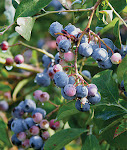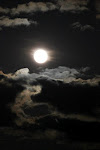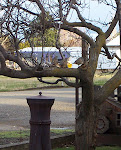Sambucus cerulea –Blue Elderberry.
Blue elderberry (S. cerulea) is native to the western U.S. and grows throughout Oregon.
Tall deciduous shrub will grow in a variety of conditions and can reach from 15 to 20 feet at maturity, often taking a broad, tree form. This is the Oregon, eastside Elderberry, more tolerant of dry and hot conditions, though it too thrives with regular moisture; in the wild it is most commonly found along streams and waterways.
The plant is relatively pest-free, and other than pruning, requires little labor. Because they grow very quickly as seedlings and saplings, they tend to get rangy; some severe pruning early on will encourage fuller growth. Prune and remove the dead canes yearly, starting the third or fourth year, to maintain a healthy hedge. Elderberry also spreads by rhizomes, layering, and suckers as well as by sprouting new canes
Yellow-white flowers, displayed in flat-topped clusters, are followed by intense blue berries that are ready for harvest in the early fall. Birds love the berries so you may need to put netting over the shrubs if you want your share.
Toxicity: Though the berries of Oregon, native Sambucus are edible, they must be cooked first, as they frequently cause nausea and stomach upset when eaten raw.
























